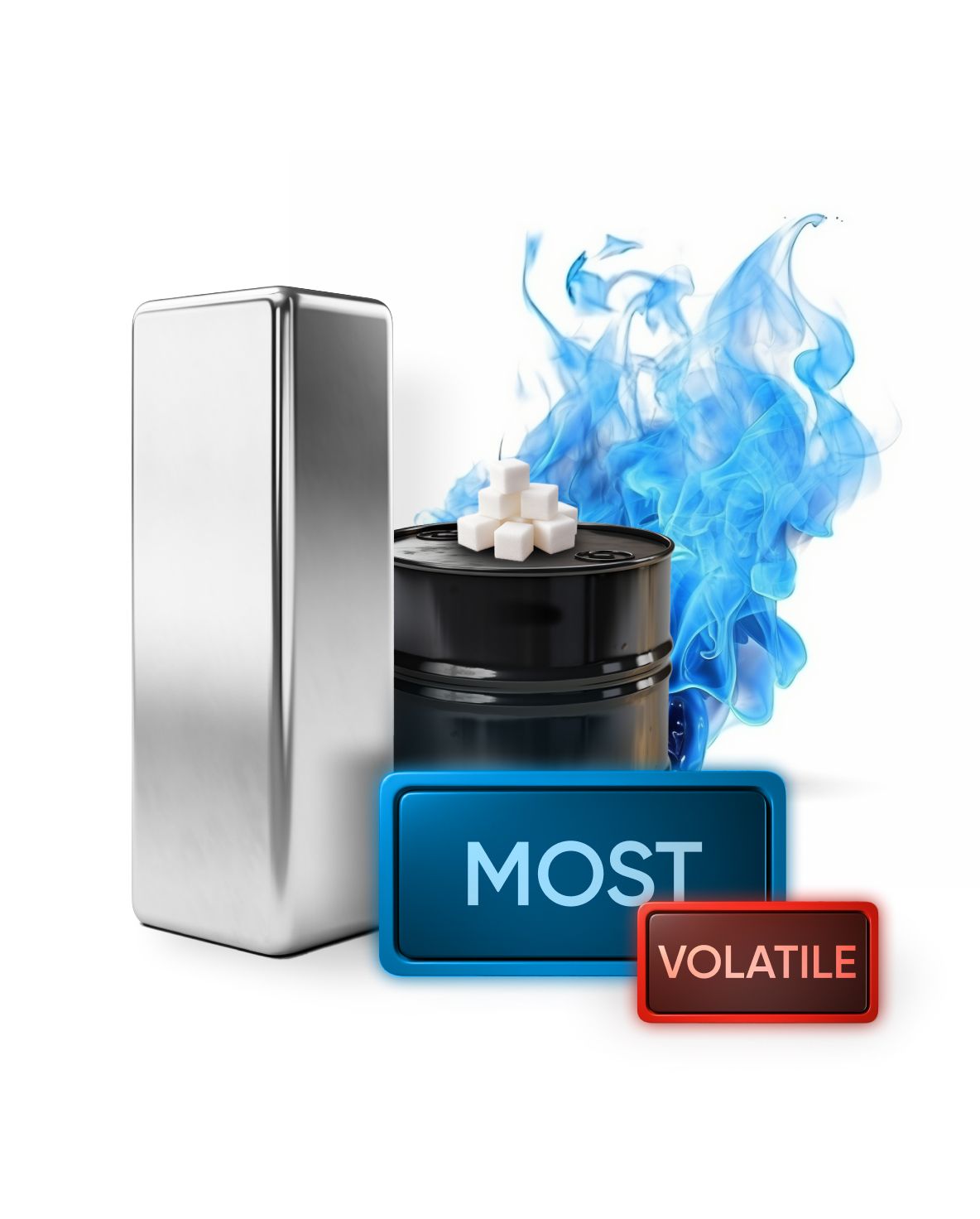HomeMarketsCommoditiesMost volatile commodities
Find out which of our CFD commodity markets are moving the most, from our range of metals, energies, softs and more.

The volatility of a commodity refers to the extent of price fluctuations that it experiences over a given period. High volatility in commodities can result from several factors, including changes in supply and demand, geopolitical events, market speculation, and seasonal cycles.
For instance, agricultural commodities might see volatility due to weather conditions affecting crop yields, while oil prices could fluctuate sharply due to political instability in oil-producing regions or changes in energy policy.
Traders monitor volatility closely because it affects both the risk and potential return of their trades.
The most volatile commodities will change depending on market conditions. That said, crude oil usually ranks as the most volatile commodity, with price moves tending to arise from geopolitical tensions, supply disruptions, and changes in global energy demand.
Other energies like natural gas can experience high volatility as well. Prices are highly sensitive to weather conditions, storage levels, and shifts in energy consumption patterns.
Silver in particular is noted for its high volatility compared to gold. The metal experiences greater price swings because it has both industrial and investment demand, making it responsive to changes in economic activity as well as market sentiment.
If you want to trade any volatile market, you should carefully research, analyse and monitor the asset that you intend to trade, and institute a thorough risk-management strategy.
‘Volatility risk’ in trading refers to the risk of a trade’s value changing due to volatility – that is, large, fast changes in the price of the financial asset on which the trade is based. This can also sometimes lead to hefty and unexpected losses.
Volatility risk is particularly relevant in markets for assets like stocks, commodities, and currencies, where prices can move dramatically in short periods due to economic data releases, geopolitical events, and sudden shifts in market sentiment.
For traders, high volatility can mean more potential entry and exit points for trades. However, it also increases the risk of losses, especially if you’re unprepared for sudden movements and don’t have an effective risk management strategy. Managing volatility risk often involves setting stop-loss orders,* diversifying your portfolio, and staying informed about market conditions to make timely decisions.
*Standard stop-losses are not guaranteed, but we offer guaranteed stop-loss orders (GSLOs) for a fee. You can check the GSLO fee value in a deal ticket when opening a position and adding a GSLO.